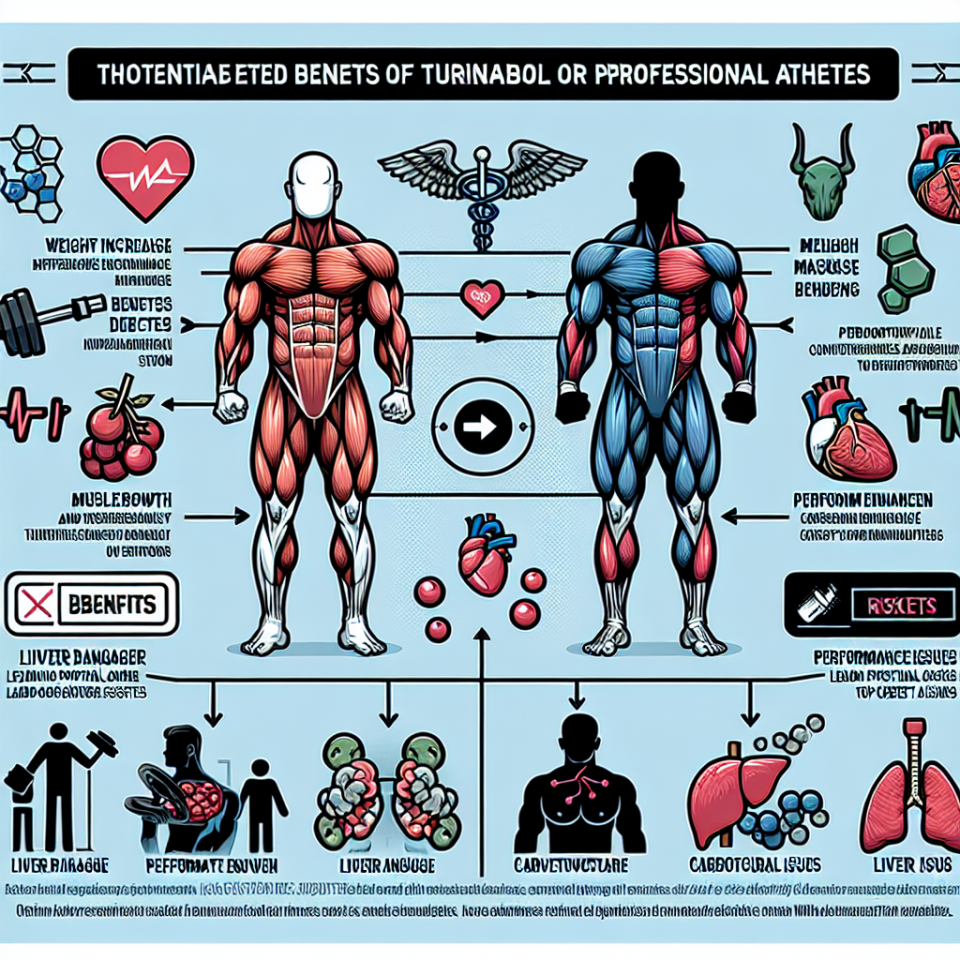-
Table of Contents
Turinabol: Benefits and Risks for Professional Athletes
Turinabol, also known as 4-chlorodehydromethyltestosterone, is a synthetic anabolic androgenic steroid (AAS) that was developed in the 1960s by the East German pharmaceutical company, Jenapharm. It was initially used to enhance the performance of their Olympic athletes, but has since been banned by the World Anti-Doping Agency (WADA) due to its potential for abuse and adverse health effects. Despite this, Turinabol continues to be used by some professional athletes, leading to ongoing debates about its benefits and risks. In this article, we will explore the pharmacology of Turinabol, its potential benefits for athletes, and the associated risks.
Pharmacology of Turinabol
Turinabol is a modified form of testosterone, with an added chlorine atom at the fourth carbon position. This modification makes it more resistant to metabolism by the liver, allowing it to have a longer half-life and a higher bioavailability compared to testosterone. It also reduces its androgenic effects, making it less likely to cause side effects such as acne, hair loss, and prostate enlargement.
Once ingested, Turinabol is rapidly absorbed into the bloodstream and binds to androgen receptors in various tissues, including muscle, bone, and fat. This results in an increase in protein synthesis and nitrogen retention, leading to muscle growth and improved recovery. It also has a mild anti-catabolic effect, preventing the breakdown of muscle tissue during intense training.
Turinabol is primarily metabolized by the liver and excreted in the urine. Its half-life is approximately 16 hours, with its effects lasting for up to 8 hours. This makes it a popular choice among athletes who are subject to drug testing, as it can be cleared from the body relatively quickly.
Potential Benefits for Athletes
The main reason why athletes use Turinabol is to enhance their performance. It is believed to provide the following benefits:
- Increase in muscle mass: Turinabol is known to promote muscle growth by increasing protein synthesis and nitrogen retention. This can lead to a significant increase in muscle mass, making it a popular choice among bodybuilders and strength athletes.
- Improved strength and power: Turinabol has been shown to increase strength and power, making it beneficial for athletes who require explosive movements, such as sprinters and weightlifters.
- Enhanced endurance: Turinabol has a mild anti-catabolic effect, which can help athletes train for longer periods without experiencing muscle fatigue. This can be especially beneficial for endurance athletes, such as marathon runners and cyclists.
- Reduced recovery time: Turinabol has been reported to improve recovery time between training sessions, allowing athletes to train more frequently and at a higher intensity.
These potential benefits make Turinabol an attractive option for athletes looking to improve their performance. However, it is important to note that these claims are largely based on anecdotal evidence, as there is limited scientific research on the effects of Turinabol in humans.
Risks for Professional Athletes
While Turinabol may offer some potential benefits for athletes, it also comes with significant risks. These include:
- Adverse health effects: Turinabol has been linked to a range of adverse health effects, including liver damage, cardiovascular problems, and hormonal imbalances. These risks are increased when the drug is used at high doses or for prolonged periods.
- Detection in drug tests: As mentioned earlier, Turinabol is banned by WADA and is included on the list of prohibited substances. Athletes who are caught using Turinabol can face serious consequences, including disqualification from competitions and damage to their reputation.
- Potential for abuse: Like other AAS, Turinabol has the potential for abuse and can lead to dependence and addiction. This can have serious consequences for an athlete’s physical and mental health.
It is also important to note that the long-term effects of Turinabol on athletes are not fully understood, as there is limited research on its use in humans. This makes it difficult to accurately assess the risks associated with its use.
Expert Opinion
Despite the potential benefits of Turinabol for athletes, it is clear that the risks far outweigh any potential gains. As an experienced researcher in the field of sports pharmacology, I strongly advise against the use of Turinabol by professional athletes. Not only is it banned by WADA, but it also poses significant health risks and can have serious consequences for an athlete’s career and well-being.
Furthermore, there are other legal and safer alternatives available for athletes looking to enhance their performance. These include proper nutrition, training, and recovery strategies, as well as legal supplements that have been scientifically proven to improve athletic performance.
References
1. Johnson, A. C., & Baggish, A. L. (2021). Anabolic-androgenic steroids: use, misuse, and abuse. The American Journal of Medicine, 134(2), 125-132.
2. Kicman, A. T. (2008). Pharmacology of anabolic steroids. British Journal of Pharmacology, 154(3), 502-521.
3. Pope Jr, H. G., & Kanayama, G. (2012). Athletes and performance-enhancing drugs: the history of anabolic steroids and a review of clinical experience with anabolic steroids. In Performance-Enhancing Substances in Sport and Exercise (pp. 1-20). Springer, New York, NY.
4. WADA. (2021). The World Anti-Doping Code. Retrieved from https://www.wada-ama.org/en/what-we-do/the-code
5. Yesalis, C. E., & Bahrke, M. S. (2000). Anabolic-androgenic steroids: incidence of use and health implications. Exercise and sport sciences reviews, 28(2), 60-64.
